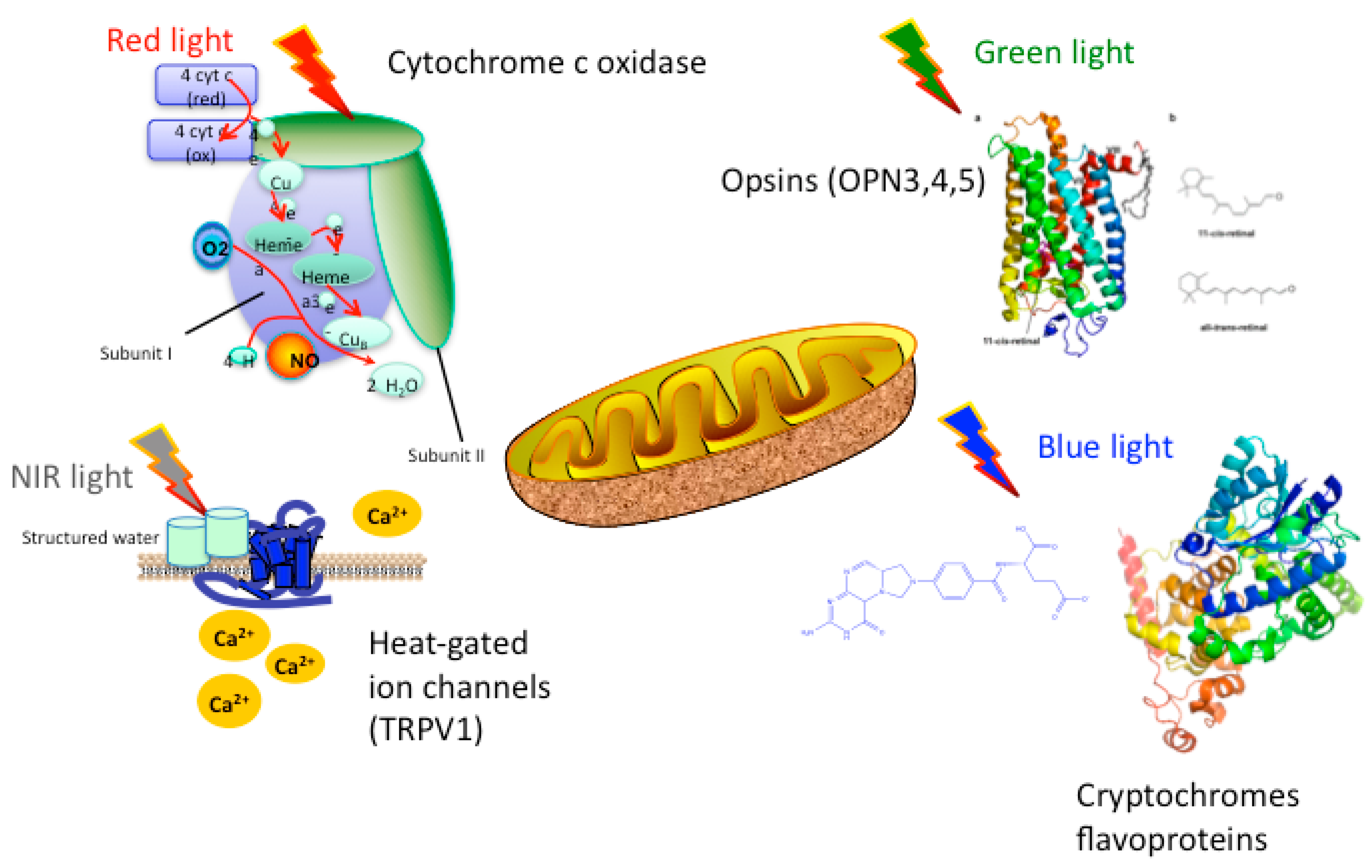Photobiomodulation Fundamentals Explained
Wiki Article
Excitement About Photobiomodulation
Table of ContentsThe Buzz on Photobiomodulation6 Simple Techniques For PhotobiomodulationPhotobiomodulation - The FactsGetting The Photobiomodulation To Work
Laser treatment is a medical treatment that uses concentrated light to boost a procedure called. During PBM, photons go into the tissue and communicate with the cytochrome c facility within mitochondria. This interaction activates a biological waterfall of occasions that causes a boost in mobile metabolism, which can along with accelerate the healing procedure.There is agreement that the application of a healing dose of light to impaired or inefficient tissue brings about a mobile reaction mediated by mitochondrial devices. Photobiomodulation. Research studies have shown that these adjustments can affect discomfort and inflammation, along with, cells repair work
Adjustments in ATP, reactive oxygen types and nitric oxide follow light absorption by Cc, O. These impacts are redox state and dosage dependent.

Some Known Questions About Photobiomodulation.
PBM devices have actually been cleared for advertising and marketing by FDA through the Premarket Notification/510( k) procedure as adjunctive devices for the temporary alleviation of discomfort. These clearances were based on the discussion of medical data to sustain such claims (Photobiomodulation). In this treatment, a light source is put near or in call with the skin, enabling the light power (photons) to penetrate tissue where it connects with chromophores located in cells leading to photophysical and photochemical adjustments that lead to modifications at the molecular, mobile and cells levels of the bodyRemarkably, current study indicates that light can improve efficiency in normal tissues and cells. The prospective applications of PBMT are numerous and are being checked out experimentally at the fundamental scientific research, pre-clinical and clinical level. The current scientific usages are for the alleviation of discomfort and swelling and the therapy of sports injuries.

The treatment criteria and number of sessions required for PBMT are dependent upon area and cause. PBMT generally needs even more than one treatment for optimum pain alleviation. It may take numerous treatments for the outcomes to come to be obvious. reports that it can take anywhere from 8 to 30 sessions for a treatment to be completely reliable, and some clients locate it required to undertake treatment 2 to 4 times per week.
Photobiomodulation for Dummies
Therapy specifications for PBMT were originally established making use of cells artificial insemination and in little animal models. These therapy specifications typically had a low irradiance and fluence and functioned well for cutaneous applications. When clinicians started to use PBMT to deal with frameworks that were located much deeper in the body, they made use of these criteria with unfavorable results.
We currently understand over here that these negative researches resulted from incorrect gadget and treatment parameters for transcutaneous therapy of deeper structures. Recent breakthroughs in laser therapy tools and more study into the appropriate dosages have actually significantly boosted the results of PBMT. For treating deep cells, the wavelength of light used figures out the deepness of penetration right into a cells.
As a result, it is very important that a medical professional uses the proper wavelength of light and parameters to deal with a condition. One wavelength and one collection of therapy parameters will not work for all problems. Adverse adverse effects have actually not been reported from making use of PBMT (Photobiomodulation). Updated June 27, 2016Juanita j
Light treatment is a non-invasive therapy that works by boosting the capacity of the cell to develop power (ATP) to recover the area being treated. Consequently, it can lower inflammation, swelling, and pain in the area. Research study around is increasing, with even more comprehensive study papers connected listed below for those that wish to discover more.
All about Photobiomodulation
In the initial experiment, Dr. Endre Mester, utilized shaved rats and observing exactly how the laser impacted their capacity to expand hair compared to the team that was not getting LLLT. He found that the team of mice obtaining LLLT had the ability to grow their hair back faster than the group of computer mice that didn't obtain LLLT (Hoon C, et al; 2012).This treatment is called this means to distinguish the distinction in between the lasers some professions utilize to reduce (eg. Low-level light therapy is painless, non-invasive therapy.
LLLT has a biphasic response, indicating that reduced doses are typically attended be extra useful than greater dosages. That being said, doses greater or reduced than the optimum dose doesn't impact (Hoon C, et alia; 2012). Because of this, it can be difficult to have a peek at this website have studies on LLLT with so lots of criteria.
Some firms combined both (LED and laser) to offer a much more well-shaped treatment because lasers can permeate much deeper than LED and infrared light (Norman Doidge, The Mind's Means of Recovery, 2015). Throughout therapy, the location that is being dealt with is subjected to LED light from a Biography, Flex Laser, which goes to 660 nm wavelength, adhered to by infrared light at 830-840 nm wavelength.
Report this wiki page